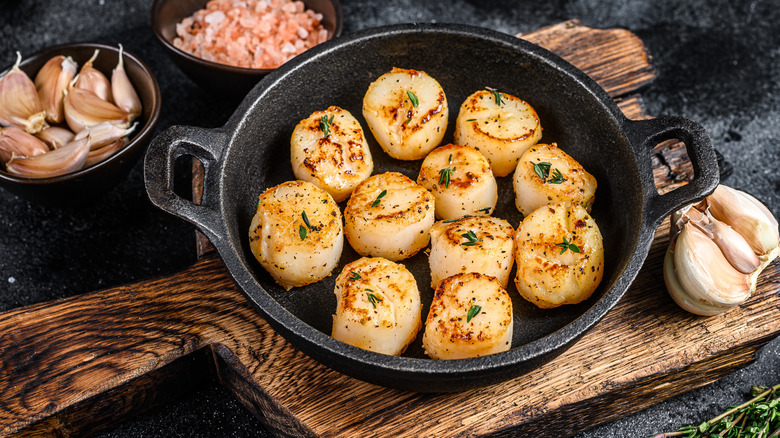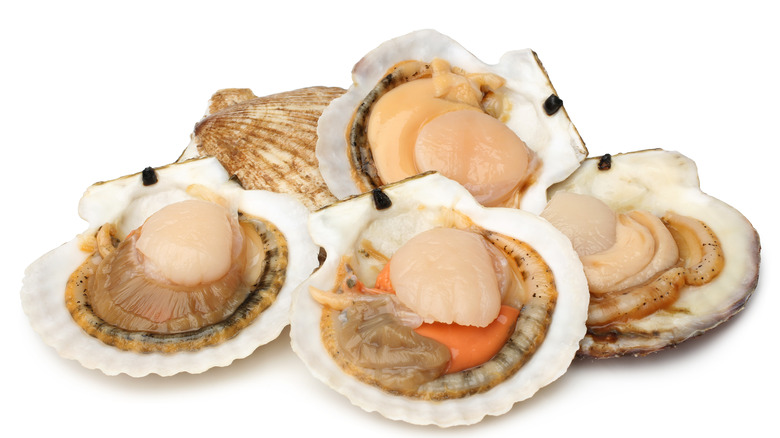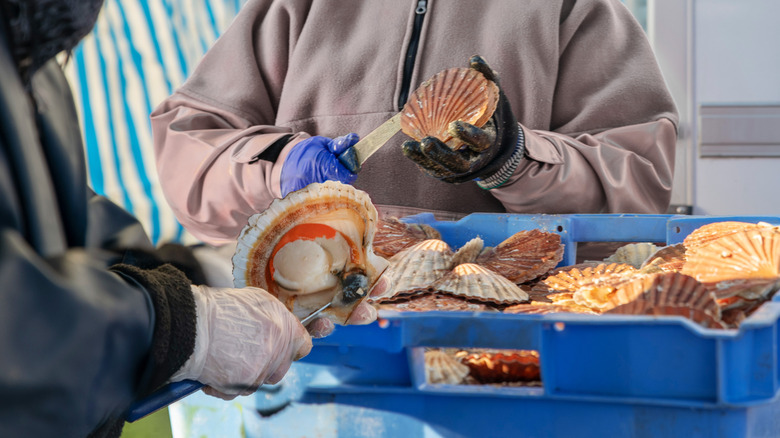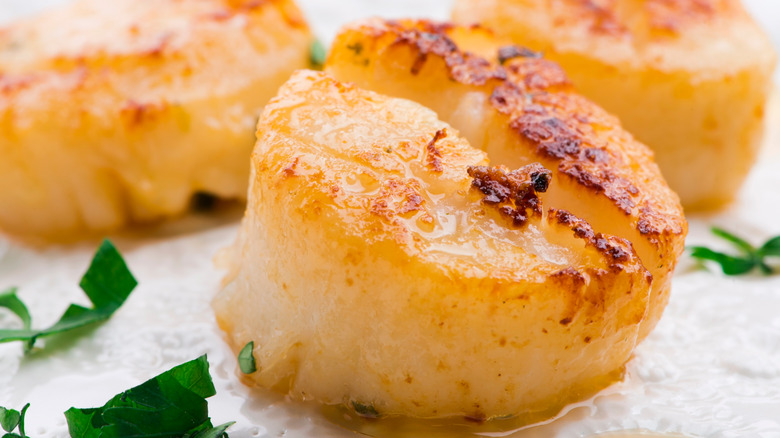The Differences Between Farmed And Wild Scallops
Scallops are like little pillows of seafood bliss most often found on upscale restaurants' menus or as a challenge on one of Gordon Ramsay's shows to test a chef's skills in the kitchen. While the tender scallops are best cooked in a simple fashion, the process of harvesting them is much more complex. But first, what are scallops and where do they come from?
Scallops are a type of bivalve mollusk, similar to oysters, mussels and clams. The interior muscle of the scallop, the adductor muscle, is encased in two shells and is the part that we eat. After it is cooked, the muscle is soft with a slightly sweet taste, according to Southern Living. There are also two different types of scallops: sea scallops and bay scallops. What really sets them apart from each other is that sea scallops are usually about three times the size of bay scallops and are generally what is served in restaurants. Bay scallops are traditionally used for seafood stews and casseroles, according MarthaStewart.com.
Scallops in the wild
Both bay and sea scallops are harvested from wild waters. As their names suggests, bay scallops are found in bays, estuaries, and shallow waters in seagrasses along the America's east coast, according to Southern Living. Sea scallops on the other hand are found on the bottom of oceans all over the world, but are most commonly caught in the northwest Atlantic Ocean.
Also do not assume that just because sea scallops are found in waters around the United States that they were harvested there. Many scallops are imported from China and Mexico for the American market due to the dwindling population of the mollusks, cites Southern Living. Both kinds of scallops are commercially harvested by dredging, which can cause damage to the habitat at the bottom of the water body, per the Environmental Defense Fund.
Seafood is labeled with one of the most respected labeling systems being the Monterey Bay Aquarium's Seafood Watch program that recognizes seafood in three categories, "Best Choice," "Good Alternative," and "Avoid" (via FoodPrint.org).
Farmed scallops
Farming seafood, including scallops, in recent years has become more popular as a way to relieve some of the pressure on wild populations. Scallops, along with other commercially-raised fish, are grown in contained areas that are constructed within oceans, lakes, rivers, or tanks. MasterClass estimates that about half of the fish consumed around the world were raised in farms.
Although fish farms have come under scrutiny because of their environmental impact, Food Print states that different fish farms have varying impacts on their surroundings. More fish farms are now using a technique to filter and recycle water during which the extra nutrients are used to feed crops, such as lettuce and tomatoes (per Food Print).
The Environmental Defense Fund (EDF) reports that bay scallops are mostly farmed in China with the use of suspension nets. This is one of the sustainable forms of aquaculture because, per the EDF, when scallops are harvested, they do not damage the habitat at the bottom of the water.
Contaminants and cost
As the saying goes, we are what we eat. That is also the case for scallops. Studies have shown that farm-raised scallops can be higher in contaminants and are more likely to have disease because of how they are raised on farms, according to a recent report by Colorado State University. Those contaminants could include metals, industrial chemicals and pesticides, per the Environmental Defense Fund.
Wild seafood, like scallops, tend to have a better diet that is more diverse than those raised on farms, according to MasterClass, which also says seafood raised on farms is also more likely to have been given antibiotics.
One of the main factors for what kind of scallops to purchase is cost. And when it comes to cost, farm-raised scallops are generally cheaper than the wild-caught scallops. This is because farm-raised seafood is usually more available for purchase than wild-caught fish, making it cheaper, according to Master Class.
Although there is a lot to consider when buying raw scallops, don't wait to be a competitor on "MasterChef." Go ahead and try your hand at making a recipe with this delectable seafood.



